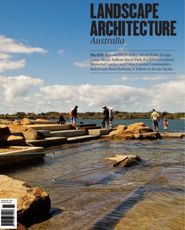
Constructing Shadows: Pergolas, Pavilions, Tents, Cables, and Plants by Peter Petschek and Siegfried Gass.
If you can’t plant a tree in your backyard, build a pergola. This collection of thirty-two projects explores the phenomenon of shade, and looks at the different constructions that can take on the role of the tree in providing protection from the sun. From pavilions and gazebos to awnings and tents, the essays in this book go so far as to analyze the type of shadows cast by these constructions.
Concern about global climate change has shifted a focus of landscape design to the provision of shade, particularly in parks, gardens and public open spaces. While this book is aimed at students and beginning practitioners – addressing construction methods, structural engineering and the history of shade – the range of content does well to offer readers more than the usual dry instruction manual.
Projects include Jacaranda Square at Sydney Olympic Park, Pier 45 at Hudson River Park in the USA, and Water Flowers Pavilions in China. The projects are teamed with true-to-scale detailed drawings, as well as a colour-photo catalogue of plants. The relationship between plants, light and shadows is also explored in depth.
Peter Petschek and Siegfried Gass (Birkhauser, Hardcover, 2011) 256 PP (EUR) $59.90.
Source

Discussion
Published online: 20 Jun 2012
Words:
Mary Mann
Issue
Landscape Architecture Australia, February 2012














